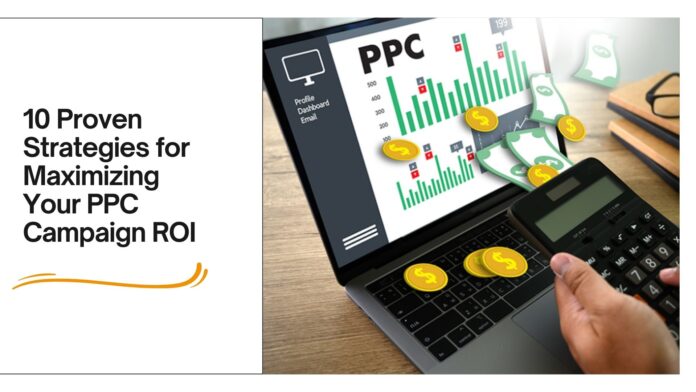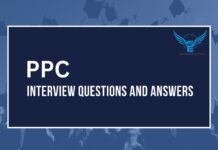Various aspects will impact your campaign’s usefulness.
Pay-per-click (PPC) advertising is an effective marketing tactic for generating sales leads, increasing website traffic, improving e-commerce purchases, and raising online brand awareness. PPC is quickly becoming essential in digital marketing as search engines like Google favor advertising and discourage natural approaches to rise in the rankings.
Although PPC is unquestionably beneficial, implementing a paid advertising plan can be difficult and requires a thorough strategy. We’ll discuss tried-and-true techniques for enhancing your PPC strategy and also frequent blunders to avoid.
How to strengthen your pay-per-click (PPC) approach
How much you spend, how you organize your keywords, and how well you optimize your PPC landing pages are just a few of the variables that affect your campaigns. To enhance your PPC strategy, take into account the following tactics:
-
When creating your PPC campaign, pick the most relevant keywords.
A successful PPC strategy depends on choosing the right keywords. You must confirm that you bid on the keywords that are most relevant to your company. According to WordStream, Google Ads receive 64.6% of hits for commercial keyword searches with high intent. (Commercial intent is the desire to purchase a good or service.)
For keyword research and selection, use the Keyword Planner in Google Adwords. However, consider that these exact keywords will likely also be by your rivals. Focus on bidding for keywords that capture the buyer’s intent to avoid wasting money on generic terms that won’t generate excellent leads.
Use descriptive keywords with the company or brand name, the sort of product or service, the location, and pertinent terms like “affordable,” “reliable,” or “guaranteed” to be clear about what people will search for it. You can even utilize a competitor’s name to attract customers that are looking for that business.
-
While running a PPC campaign, prioritize giving value.
You must have a laser-like focus on practical lead conversions while spending money to bring traffic to your website. It all starts with providing valuable experiences for your visitors.
A successful PPC campaign depends on conversions, yet a few PPC accounts have reliable consumer tracking tools. Active tracking enables you to customize the user experience and add value for each individual that views your material.
-
When running a PPC campaign, choose long-tail keywords.
Because short-tail keywords (those with only a few words) can cover a wide range of topics, many people and businesses continue to employ them. Examples of short-tail keywords include “best auto insurance” and “ways to lose weight.”
A long-tail keyword of at least five words, like “how to lose weight and increase muscle,” will surely; offer you better results. The people who click your ad will be more likely to convert because your solution addresses a particular need, even though it may not draw as multiple clicks as a short-tail term.
Long-tail keywords are more likely to show up more often and draw users looking for your answer. Choose long-tail keywords that naturally align with your product or solution for the most excellent results.
-
With your PPC campaign, focus on new and recurring clients.
The marketing journey starts when a user clicks on an advertisement to learn more about a good or service. These potential customers are attracted to the emphasis of your campaign, but they must find value in your company before they decide to become clients.
A new approach is required; for those who are further along in the client journey. They are aware of the services and are actively considering buying something. Retargeting these prospects with keywords relevant to them can be an option. Use phrases like “employ a social media team” instead of the more general “social media agency,” for instance, if you offer a social media marketing service.
Retargeting is crucial since potential customers must interact with a new brand on several levels before purchasing it.
-
Your PPC campaign needs a call to action.
A call to action appears at the end of every effective commercial (CTA). While the body of the advertisement should concentrate on offering value to the consumer, the CTA must specify a precise and practical next step.
What is the logical next step once potential clients have benefited greatly from your advertisement? Give customers clear instructions on how to get the advantages you mentioned in your campaign. For instance, a CTA could direct potential customers to your website, download a newsletter, sign up for your email list, or purchase a product.
A call to action appears at the end of every effective commercial (CTA). While the body of the advertisement should concentrate on offering value to the consumer, the CTA must specify a precise and practical next step.
What is the logical next step once potential clients have benefited greatly from your advertisement? Give customers clear instructions on how to get the advantages you mentioned in your campaign. For instance, a CTA could direct potential customers to your website, download a newsletter, sign up for your email list, or purchase a product.
-
Include geotargeting in your PPC plan.
Using geotargeting, you can maximize the value of every click—audiences from varied areas and with different tastes. With the help of geotargeting, you may conduct separate ads in various locations, giving your marketing efforts some degree of customization to suit distinct preferences and demands.
-
With your PPC strategy, concentrate on quality rather than quantity.
Your website or landing page must provide high-quality information after a potential buyer clicks on your PPC ad. Now that you’ve paid for the click, it’s time to ensure you get the most out of your PPC investments.
It’s essential to deliver content that is both; innately persuasive and tuned for customer conversion. Consider the motivations behind website visitors and the value you can offer them once they interact with your company.
-
Make your PPC campaign mobile-friendly.
There are substantial differences between the content on desktop computers and mobile devices. As more people use mobile devices to access the internet, you must design responsive PPC advertising that is optimized; for the mobile experience.
5.3 billion people currently subscribe to mobile services, and 400 million more; are predicted to do so by 2025, according to the GSMA’s Mobile Economy report. Because of their extensive reach, mobile device marketing is essential, and companies must give high importance to media that works and converts well on mobile.
To remain competitive, confirm your approach coincides with the trends among your customer base.
-
Focus your PPC campaign on ad groups.
For an ad group to receive a high-quality score, relevance is necessary. So every ad group you use needs to serve a specific function. When you want more conversions and clicks, creating distinct ad groups for each term is considerably more successful than targeting everyone with the same ad. Ad groups work best when the target demographic is specific, especially when few online users believe the advertising displayed on a website applies to them.
To distinguish your ad groups based on the customer journey placement, location, or demographics. If you own a real estate business, for instance: a first-time homeowner will have different needs than someone who wants to downsize once their children have graduated from college.
-
Recognize that in a PPC campaign, time is crucial.
Your advertisements must reach your target audience at the ideal moment for client conversion. According to studies, PPC interactions peak between 11 a.m. and 2 p.m. and fluctuate throughout the rest of the day. According to some experts, PPC advertising performs best on Tuesdays and Fridays.
The ideal hours for your PPC campaign will depend on your sector and individual customer demographics. Integrate what you’ve learned about your industry’s best practices into your marketing plan.
Profitability in PPC advertising is an art.
Pay-per-click advertising can be highly effective, but it takes some trial and error to produce great results. PPC campaigns aren’t as simple as they might seem. Running successful PPC advertisements can be an art form, just like any other part of a business. Make sure you examine every detail of your advertising campaign and put in the time and effort to create the best possible plan.






